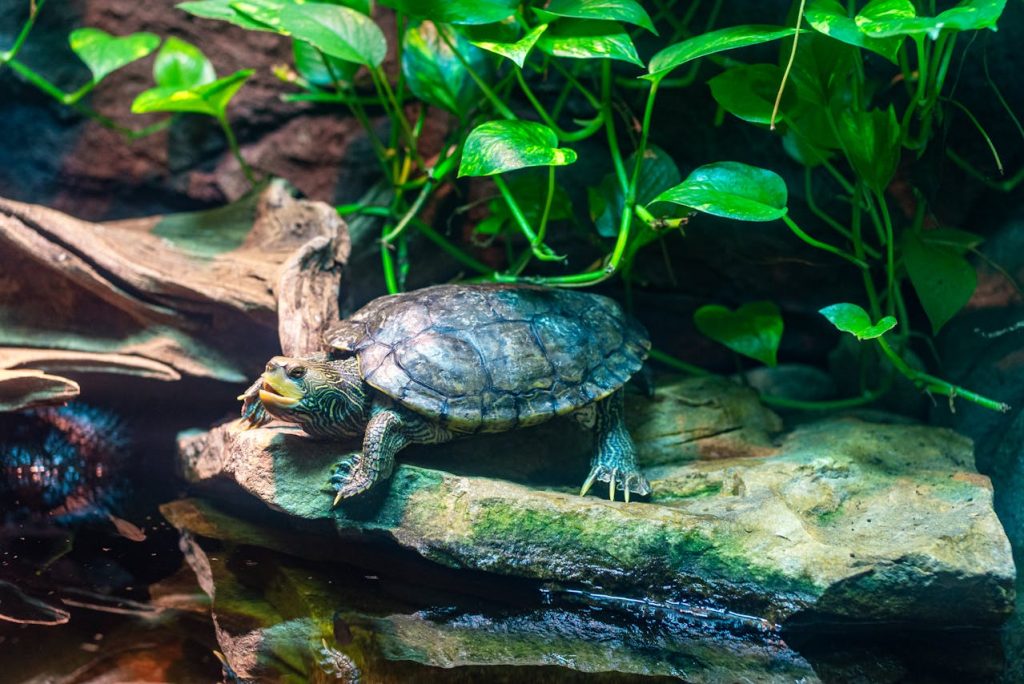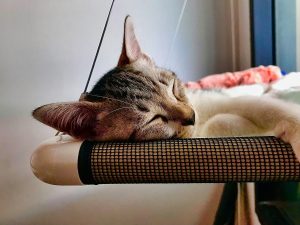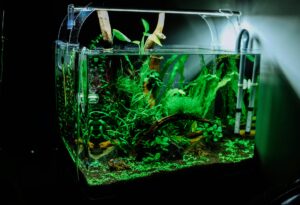
15 Brilliant Turtle Tank Apartment Setup Tips (Clean, Quiet, and Easy to Maintain)
A thoughtfully designed turtle tank apartment setup can make caring for aquatic turtles in small spaces surprisingly simple. With the right layout, water filtration, and lighting, you can enjoy a low-noise, low-odor habitat that looks like a peaceful centerpiece instead of a chore. The key is balancing efficiency and aesthetics — keeping everything clean, contained, and renter-safe.
Below you’ll find fifteen smart ways to design a space-efficient, easy-to-clean turtle tank that protects your furniture, controls odor, and keeps your turtles happy. Whether you live in a studio or a high-rise apartment, these practical tips will help you create a quiet, balanced environment that both you and your reptiles will love.
1. Pick the Right Tank Size and Shape for Apartment Living
The first step in any turtle tank apartment setup is choosing the right aquarium. Most aquatic turtles need at least 10 gallons of water per inch of shell length. That means even a small slider or painted turtle will do best in a 40–55 gallon tank. While that might sound large, taller tanks with reinforced glass and strong stands can save precious floor space.
If your apartment has weight limits or limited floor area, consider a **turtle tub setup** — lightweight plastic tubs with external filters that are easier to move and maintain. For a helpful overview of space and water needs, see the PetMD aquatic turtle care guide for recommended species and tank guidelines.
2. Place the Tank on a Stable, Water-Resistant Surface
Turtle tanks are heavy when filled — a 40-gallon setup can exceed 400 pounds once water, rock, and equipment are added. Always use a sturdy, waterproof stand or cabinet rated for aquarium weight. Avoid placing the tank directly on laminate or carpeted floors, which can trap moisture and damage your rental.
For added protection, place a rubber or vinyl mat beneath the stand to catch drips and absorb vibration. This keeps the area clean, prevents swelling or floor warping, and also helps reduce noise — a big plus for apartment dwellers. If you’re unsure how to protect walls and furniture nearby, check our pet-proof apartment tips.
3. Choose a Quiet Filter That Handles Turtle Waste Efficiently
Turtles produce far more waste than fish, so a strong and quiet filter is essential. Look for a **canister or external power filter** that processes at least **two to three times** your tank’s volume per hour. Filters labeled “quiet flow” or “whisper” are ideal for apartment living, keeping noise low while maintaining clear water.
For extra peace and quiet, place a small foam or rubber pad beneath the filter to absorb vibration. Clean filter media weekly, and rinse it in removed tank water instead of under the tap to preserve beneficial bacteria. For long-term water clarity and odor control, check out The Spruce Pets’ guide on keeping turtle water clean.
4. Control Humidity and Odor with Smart Airflow
A turtle tank naturally creates humidity, which can make small apartments feel damp if not ventilated properly. Keep your setup in a **well-ventilated room** away from soft furniture or curtains, and use a small oscillating fan or dehumidifier on low if the air feels heavy. Always cover your tank with a secure mesh lid that allows airflow while preventing escapes.
To keep odors in check, change 25–30% of the water weekly, remove leftover food after feedings, and wipe condensation from the lid. Adding **live aquatic plants** such as Anubias or hornwort can help absorb waste and freshen the air naturally. For whole-home freshness, use the tactics from our ultimate pet odor-control guide.
5. Add a Safe Basking Area and Heat Source
Every aquatic turtle needs a dry area to bask and regulate body temperature. Use a **floating dock or raised platform** that supports your turtle’s full weight without tipping. Mount a **basking lamp** overhead and pair it with a **UVB bulb** to support shell health and vitamin D3 synthesis. Keep the basking area around 85–90°F and the water 75–78°F for most species.
To minimize glare or light spill in apartments, use a **reflective dome** and aim the bulb downward at an angle. Position the setup so that light doesn’t shine directly onto walls or neighbors’ windows. This simple detail makes your turtle corner bright and natural without disrupting your living space.
6. Use Noise-Reducing Mats and Stands to Keep It Apartment-Quiet
Water filters, air pumps, and lighting fixtures can create subtle hums that carry through apartment walls. To keep your turtle tank peaceful, place a rubber or foam mat beneath the stand to absorb vibration. Add small silicone bumpers between the tank and lid or lights to stop rattles. This also helps protect furniture and floors from vibration marks and moisture buildup.
For extra silence, keep equipment cords off hard surfaces and loop them into gentle U-shapes (drip loops). This prevents both noise and accidental water contact with outlets—important for renter safety. Quiet tanks make for calmer turtles and happier neighbors.
7. Keep the Tank Area Dry and Furniture Protected
Apartment floors and wood furniture can easily warp or stain from turtle tank splashes. Protect surfaces by placing a vinyl mat or tray beneath the setup, extending a few inches past the stand. Wipe condensation off glass and cords during water changes, and store towels or microfiber cloths nearby for quick cleanups.
If your tank sits near a wall, add a clear plastic backsplash panel to catch droplets and prevent water stains. It attaches with removable strips, leaving no damage when you move out. For more renter-safe water protection ideas, explore our pet-proof apartment tips.
8. Simplify Cleaning with Compact Tools and Routine
Cleaning doesn’t have to mean chaos. Use a small gravel vacuum, algae scrubber, and dedicated “turtle-only” bucket for maintenance. Keep tools together in a bin under the stand so they’re easy to grab without cluttering your apartment. Once a week, remove 25–30% of the water, wipe the glass, and rinse the filter sponges in tank water.
Consistent light cleaning prevents big messes later. If algae grows fast, shorten the light cycle by an hour or add floating plants for shade. The key is frequency—five minutes weekly beats a full scrub once a month. Follow The Spruce Pets’ cleaning guide for extra maintenance tips that won’t overwhelm your schedule.
9. Control Splash and Evaporation with Tank Lids and Barriers
Active turtles love to paddle and climb, which can send water droplets flying outside the tank. To prevent splashes and minimize humidity, use a mesh or acrylic tank lid with a small open section for your basking lamp. Avoid glass tops that trap too much heat and moisture, especially in smaller apartments.
Acrylic splash guards or clear plastic panels can be attached with removable clips to the tank’s inner rim. They block excess spray while keeping air circulation steady. Regularly wipe these barriers to prevent calcium buildup and algae stains, and you’ll maintain a cleaner, fresher-smelling room overall.
10. Use Natural Décor for Beauty and Function
Natural tank setups are easier to maintain and look great in apartments. Choose river rocks, driftwood, and aquatic plants instead of plastic décor, which can collect grime. These natural materials provide climbing spots, hiding areas, and help balance your water chemistry. Driftwood slightly softens the water while plants consume excess waste, keeping things clean between changes.
For a stylish, minimalist apartment vibe, arrange your décor with open space in mind — turtles need plenty of swimming room. Keep the design consistent with your furniture tones to make the setup feel like a living art piece instead of a bulky pet enclosure.
11. Keep Feeding Neat with a Separate Feeding Container
One of the best tricks for clean water is **feeding your turtle in a separate container**. This prevents food debris from rotting in the main tank and keeps your filter from clogging. Simply move your turtle to a shallow bin or tub filled with a few inches of warm water during feeding time. After they finish, pour out the water and rinse the container in the sink.
This routine cuts odor and maintenance dramatically. It also helps you observe your turtle’s appetite and behavior more easily. Make feeding time consistent — same spot, same hour — to help your turtle feel secure and establish a predictable rhythm that fits apartment life.
12. Keep Temperature Stable with Smart Placement and Thermometers
Temperature swings can stress turtles quickly, especially in smaller apartments where HVAC systems cycle often. Keep your tank away from drafty windows, vents, or radiators. Use both a submersible heater for the water and a digital thermometer to track basking area warmth. Maintaining consistent temperatures between 75–90°F (depending on species) supports healthy digestion and shell growth.
You can also insulate your tank slightly by placing a thin foam pad or cork sheet behind it—this reduces heat loss without changing the look. If your building gets warm naturally, opt for adjustable thermostats on your heater to prevent overheating during summer months.
13. Use Lighting Timers and Energy-Efficient Bulbs
Turtles thrive on predictable light cycles, but manually switching bulbs can be easy to forget. Use a plug-in timer to automate your UVB and basking lights for 10–12 hours per day. This keeps your turtle’s sleep-wake rhythm steady and helps control algae growth in the tank.
Choose energy-efficient LED daylight bulbs for ambient light—they’re bright, long-lasting, and won’t spike your electric bill. Combine that with a dome fixture that directs light downward to avoid glare in your apartment. These small tweaks keep your tank eco-friendly, affordable, and apartment-approved.
14. Store Supplies Smartly to Save Space and Stay Organized
Turtle care comes with a lot of accessories — food, filters, dechlorinator, thermometers, and towels. Keep your apartment tidy by dedicating one drawer, shelf, or plastic bin exclusively to tank supplies. Label everything clearly, and separate clean items from those used during maintenance.
If space is tight, use a rolling cart or under-stand storage box to keep everything within reach but out of sight. Compact organization not only saves space but also makes weekly cleanings faster and less stressful, especially for busy pet parents in small apartments.
15. Prepare for Emergencies and Power Outages
Even a short power outage can affect your turtle’s health, especially in winter. Keep a **battery-powered air pump**, an **emergency heat pack**, and a small backup light handy in case of loss of power. These tools maintain oxygen and warmth long enough for most short interruptions.
For peace of mind, note your local emergency vet and your landlord’s water shutoff contact. It’s also smart to keep towels and spare buckets nearby for quick cleanup if a hose leaks or filter overflows. For a full renter-safe checklist, check out our pet emergency preparedness guide.
Final Thoughts
A well-planned turtle tank apartment setup blends function, beauty, and peace of mind. With the right filtration, lighting, and space-saving tricks, your turtle can thrive in a healthy, low-noise environment that fits comfortably into your apartment life.
These small details — like quiet mats, feeding bins, and organized supplies — make all the difference for keeping your home fresh and stress-free. Once balanced, your tank becomes not just a habitat but a tranquil focal point that adds calm energy to your everyday routine.
Turtle tank apartment setup guide with 15 brilliant tips for quiet filters, clean water, safe basking, and renter-friendly care in small living spaces.
Frequently Asked Questions
What size turtle tank is best for an apartment?
Most aquatic turtles need at least 10 gallons of water per inch of shell length. For small apartments, a 40–55 gallon tank works well if placed on a sturdy stand or table. Smaller species, like musk turtles, can live comfortably in compact setups with strong filtration.
How do I keep my turtle tank from smelling in an apartment?
Odors usually come from leftover food and dirty filters. Feed your turtle in a separate container, clean filters weekly, and change 25–30% of the water regularly. Adding live plants and ensuring good airflow will also help keep the area fresh.
Where should I put my turtle tank in a small apartment?
Place the tank on a level, waterproof stand away from windows, vents, and heaters. Avoid carpeted areas and direct sunlight to prevent moisture buildup, algae growth, and temperature fluctuations. A corner with good lighting and ventilation works best.
How often should I clean my turtle tank?
Do partial water changes once a week and full cleanings monthly. Rinse the filter media in tank water, not tap water, to keep beneficial bacteria intact. Regular upkeep prevents odor and keeps your turtle’s habitat healthy and visually clear.
Can turtles live comfortably in apartments?
Absolutely. With proper tank size, quiet filtration, and regular care, turtles can thrive in apartments. They’re calm, low-noise pets that adapt well to smaller spaces as long as their water, light, and temperature needs are consistently met.

Join the Busy Pet Parent Newsletter!
Get easy routines, time-saving tips, and the latest gear reviews—delivered straight to your inbox.
Perfect for busy pet owners, apartment dwellers, and anyone who wants a happy, healthy companion (without the stress).
Exclusive guides & checklists
Product recommendations & deals
No spam—unsubscribe anytime!




